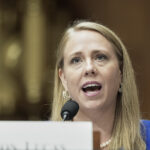Aon Benfield, the global reinsurance intermediary and capital advisor of Aon Corp., has launched an earthquake model for the island of Cyprus, following requests from insurers seeking “to increase their understanding of seismic risk in the region.”
Aon said its Impact Forecasting catastrophe model development center, “has helped to bridge a gap in the market where no viable alternatives to model this peril currently exist.” It also noted that “earthquakes in Cyprus are common as the island is situated in close proximity to the boundary between the Anatolian and African plates.
“In the past 100 years Cyprus has experienced close to 20 earthquakes that have caused property damage, as well as injuries and deaths in some instances. Notable events include the February 1995 earthquake afflicting Paphos and Nicosia and the October 1996 event causing losses in Paphos and Limassol.”
As a result the bulletin said “local insurance companies have been lobbying for a model that is up to date and provides realistic results to assess their exposures. In response, the Impact Forecasting team worked to create a robust model in collaboration with Professor Carydis at the National Technical University of Athens and his team of civil and structural engineers and seismologists.”
Aon noted that its research featured the following components of the model:
1. Potential seismic sources in Cyprus that constitute an event set of over 10,000 earthquake scenarios, both onshore and offshore;
2. The vulnerability of Cypriot building stock by various engineering metrics including construction class, age and seismic zone, as well as geographical distribution.
It also explained that the “Impact Forecasting model can provide insurers with quantitative loss estimates even when the input exposure data is given at an aggregate or CRESTA zone level and construction information is incomplete.”
Alexander Turner, Deputy CEO of Aon Benfield Greece, commented: “Cypriot insurers are increasingly turning to catastrophe models to help determine their reinsurance purchases. We have been able to support this trend by providing the new earthquake model, in addition to demonstrating the value of other analytical technology such as our dynamic financial analysis tools.”
Steven Jakubowski, President of Impact Forecasting, added: “In the development of peril models, Impact Forecasting always partners with local institutions and universities to incorporate into these models the latest scientific understanding of the peril and the vulnerability of the built environment.”
Source: Aon Benfield
Topics Catastrophe Natural Disasters Aon
Was this article valuable?
Here are more articles you may enjoy.


 Howden US Tells Judge Brown & Brown Employees Fled Due to ‘Mistreatment’
Howden US Tells Judge Brown & Brown Employees Fled Due to ‘Mistreatment’  Head of EEOC Urges White Men to Report Discrimination
Head of EEOC Urges White Men to Report Discrimination  Former CEO of Nonprofit P/C Statistical Agent Sentenced for Stealing Millions
Former CEO of Nonprofit P/C Statistical Agent Sentenced for Stealing Millions  Top National Insurance Journal Stories of 2025
Top National Insurance Journal Stories of 2025 

